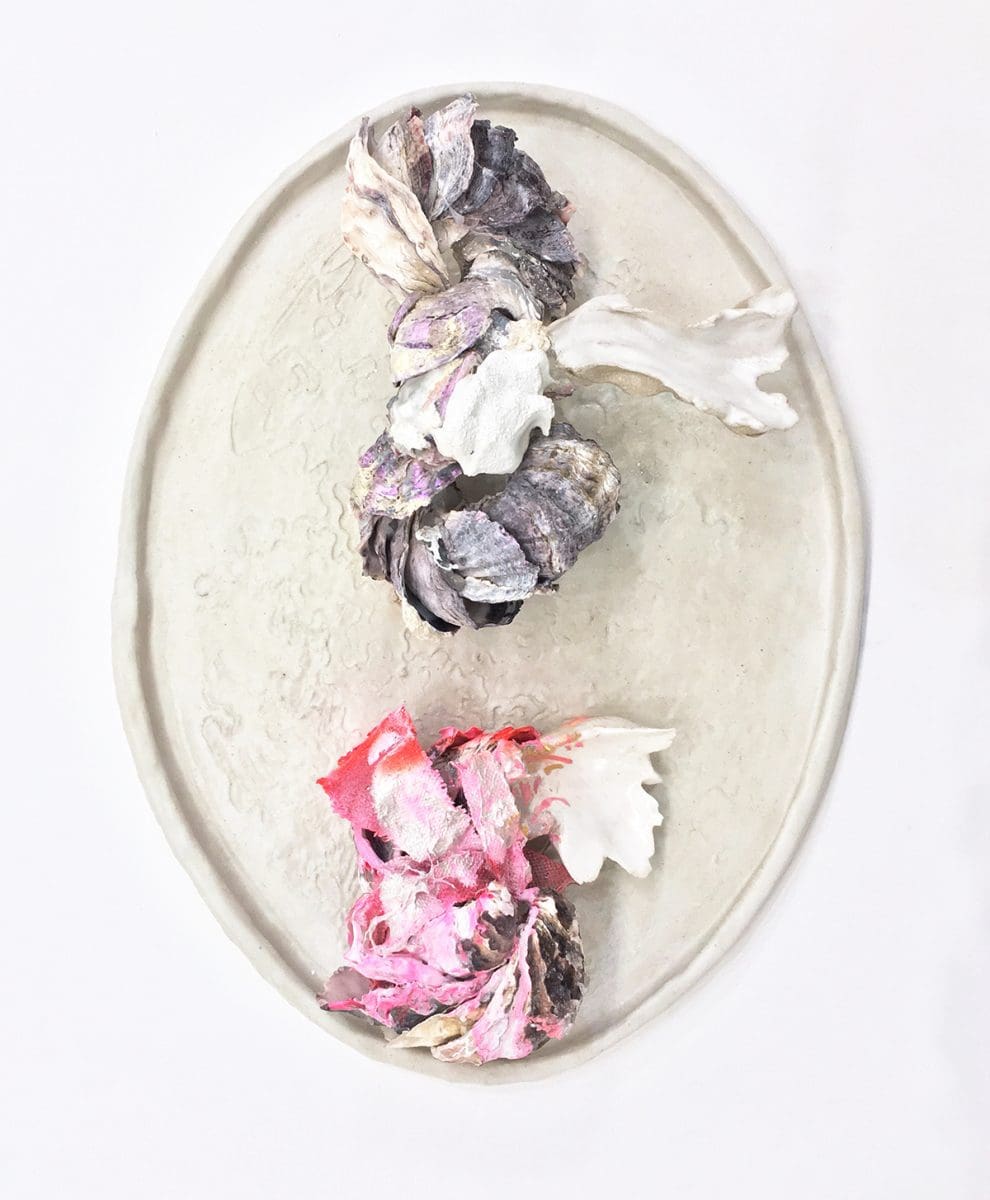
Piercing the veil
A new exhibition at Buxton Contemporary finds a rich complexity in the shadowy terrain between life and death.

Chris O’Brien, No.8 Urquart St Northcote (Edmund House), 2016, earthenware, glaze, 19 x 11 x 18 cm. Image courtesy of Arts Project Australia

Alex Pittendrigh, Present, and Alien 1, 2017–18 © and courtesy the artist, and Murray White Room, Melbourne.

Jenny Orchard, The Imagined Possibility of Unity (detail), 2017. Winner, Sidney Myer Fund Australian Ceramic Award 2017. Ceramic, metal stand, rubber, plastic polymer pipe, raffia, synthetic fibre, bubble wrap, plastic chandelier parts, tin necklace, car tyre inner tube. Dimensions variable, © the artist, courtesy Shepparton Art Museum. Photo by Christian Capurro.

Noami Eller, Dead Weights I-IX, 2018, clay, wax, shellac and rope. Courtesy the artist.
Handmade ceramics are often described as possessing the marks of their makers. Like an extension of the individual, the clay form is born from within the maker, a direct conduit of imagination and memory. Commercially finished ceramics may lack these unique marks, yet they still bring essential function and practicality to the minutiae of our daily lives through the vessel, plate or container.
Whether creating functional pieces for the home, delicate white porcelain vessels, or joyously expressive sculptural forms, makers have been using the ceramic medium for centuries to fulfil a broad range of purposes. To celebrate this versatility, Shepparton Art Museum (SAM) director Rebecca Coates worked with Arts Project Australia to curate All our relations, an exhibition exploring how ceramics can embody the things that bring us joy and bind us together. From depictions of mechanical apparatus to manifestations of the spiritual, the objects Coates has assembled come from 18 Australian contemporary artists (including a number of artists from the Arts Project Studio), commercial potteries and the SAM permanent collection.
Immensely colourful and taking on the guise of godlike mashups of human, animal and spirit, Orchard’s pieces are instilled with the essence of her upbringing in Zimbabwe, global folklore, magic and the history of decorative objects. The figurative totems of Ramesh Mario Nithiyendran and Georgia Szmerling’s dreamlike configurations of animals and plants are fitting companions to Orchard’s work and together their pieces form an alliance of sublime objects.

In contrast to Orchard and Szmerling’s multi-layered sculptures, Alan Constable’s cameras and telescopes are tactile and grainy, the earthy texture of clay clearly visible in their hand moulded forms. Constable is legally blind so to create his cameras, he must hold the clay close to his face and carefully shape his forms. Constable’s finished pieces represent handheld movie cameras, vintage box brownies and polaroid cameras – each a homage to an object he has adored since childhood.
This method of hand working clay without machinery is also used by the Indigenous artists of the Hermannsburg Potters. Based in Central Australia, the Aranda artists use a traditional technique of hand coiling clay – placing coil on coil until a vessel forms – to create their terracotta pots. This method was first introduced to the Hermannsburg Potters as a response to the difficulties of producing ceramics in a remote location and it remains their favoured way of making. Using the tools they have on hand, like wooden paddles and metal spoons, the artists decorate their work with layers of underglaze, creating distinct patterns evoking region specific elements of Indigenous culture.
She writes, “The recent popularity of ceramics follows a number of trends. In part, it is about the visceral pleasure of making, the license to get your hands in the mud.” Despite the production differences in handmade objects and those commercially produced, Coates says each work she has chosen for All our relations shares a common element. She sums it up as, “They all delight in clay.”
All our relations
Arts Project Australia
27 October – 24 November